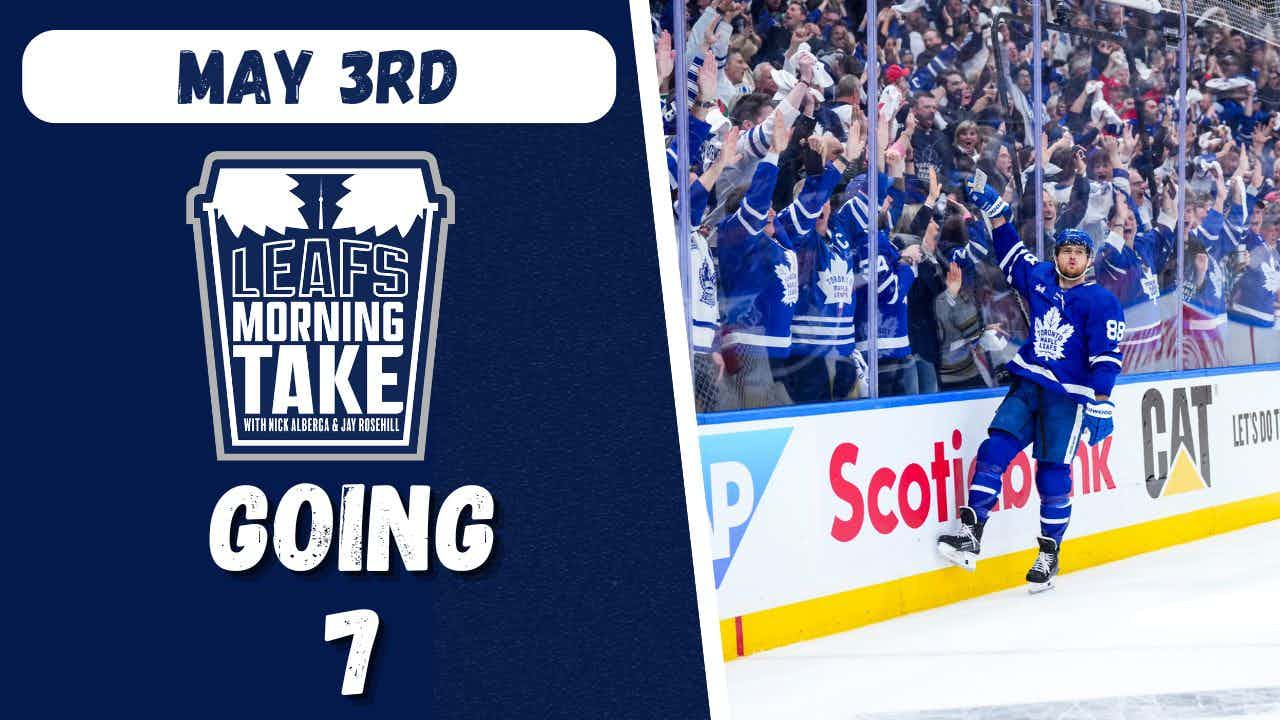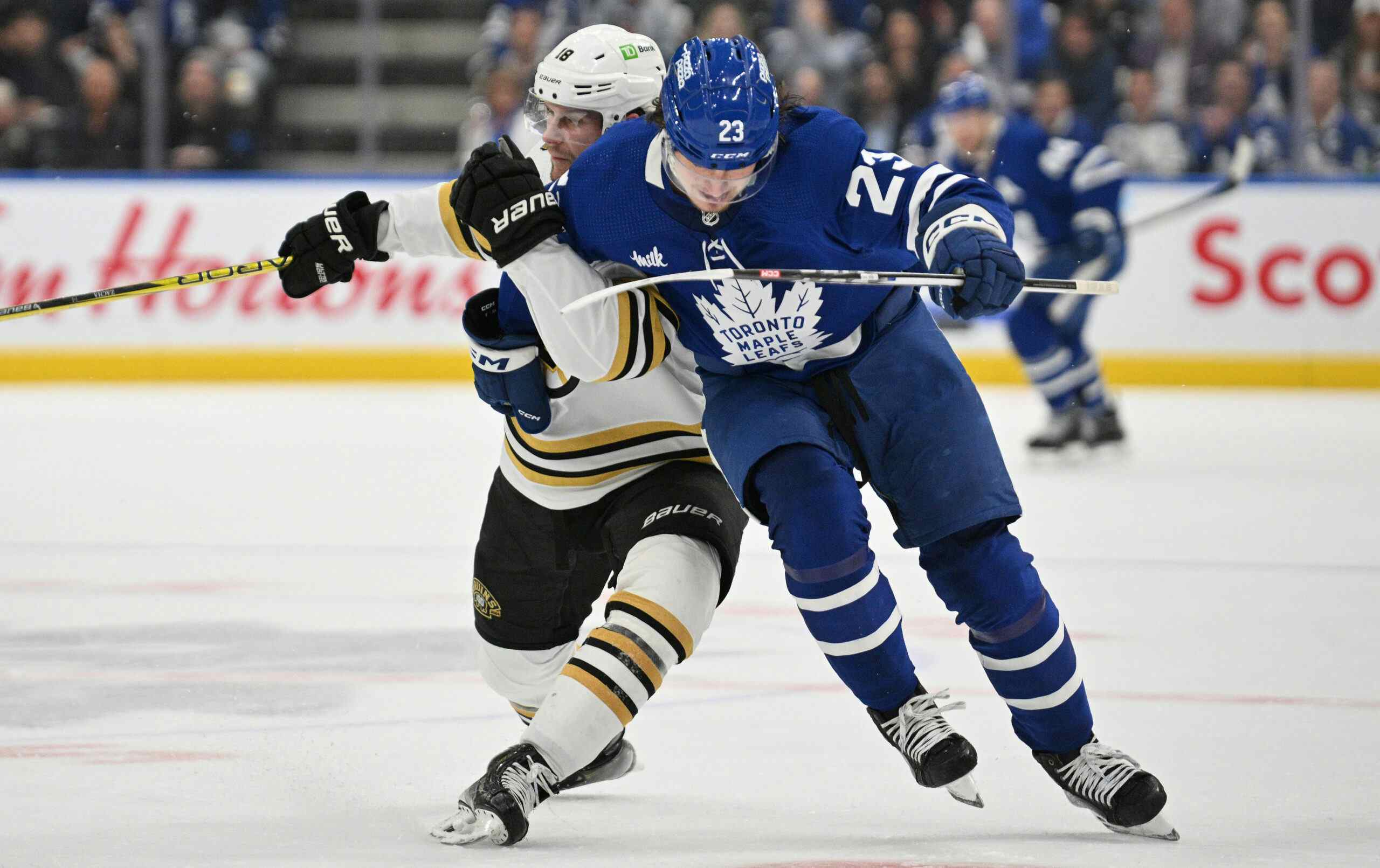Fiction vs. Reality: Expectations for Jonathan Bernier’s New Contract
Jonathan Bernier sent the hockey community into a somewhat-warranted tailspin (at least in Toronto, which is the centre of all things anyway) when his wife posted a picture of their baby son on Instagram with the Leafs logos on his shirt altered out of the picture.
The whole story suggested that she and Bernier knew something about his impending contract that the rest of the hockey world didn’t — and while it may be that their son is going to be on Hockey Wives in the onesie (meaning the logo would need to be cropped out) or that he’s going to get dealt, it’s also entirely likely that the family just didn’t want to announce ahead of the club that the Toronto Maple Leafs had elected to go to salary arbitration with the 26 year old netminder.
Bernier has been a source of controversy among Leafs fans, analysts, and media personnel for what seems like forever — so this is hardly a shock. What can we expect from it, though?
Prior to the trade deadline, Sportsnet’s Damien Cox suggested that the Laval, Quebec netminder could be a best-option piece to move before the season ended. While his cap hit was somewhat reasonable — the $2.9M AAV he commanded over each of the last two seasons, significantly lower than the estimated $5.55M AAV market value for a bona fide starter — his qualifying offer has to be higher than what he made this year, which was $3.4M.
The collective .912 SV% Bernier recorded this season put him in the bottom of NHL starters with at least 2000 minutes played, but his career numbers have traditionally been a little higher than that. It’s safe to say that, on the open market, a goaltender like Bernier could command the league average salary.
Courtesy of war-on-ice.com, here’s a look at where Bernier compares to the rest of the league in both unadjusted and adjusted SV% at even strength. Since it’s kind of hard to tell, he’s right in between Jonas Hiller (CGY) and Ben Bishop (TBL):

Interestingly enough, Bernier — who had developed a reputation for being on fire one game and ice cold the next, with a bit of a penchant for allowing early-period goals before finding his rhythm — has a high-danger save percentage of 84.14%, looking only at 5-vs-5 play. When adding in special teams, his numbers actually don’t drop that much — he only dropped to an 83.85 high danger save percentage when factoring in special teams.
Those are relatively good numbers.
The biggest problem with finding a comparable for Bernier, of course, is that he’s a starter who has never seen a sixty-game season. His last two years have seen fifty-five starts and fifty-eight starts, respectively — so while he’ll want to look at a comparable with guys like Mike Smith (whom he’s proven to be better than, even in their respective positive regressionary seasons) or Marc-Andre Fleury (whom his career average is likely to most closely match over time), he’ll need to broaden his comparables to all U28 netminders with at least fifty starts in a season.
The Leafs Nation’s Jon Steitzer took a look at this back in February, before things really went to hell in a handbasket for Toronto. Assuming the club’s epic collapse affected Bernier as much as it did nearly every player on the team, let’s stick to Steitzer’s comparables for now:

Image courtesy of HockeyReference.com, numbers through February 3rd, 2015.
Steve Mason is a good comparable because he’s had some fairly awful seasons and seen his good seasons, as well (namely, this past one). It’s safe to assume that Braden Holtby will see his numbers go up — but he’s a pending RFA as well, so it’s hard to use him as a financial gauge — and Frederik Andersen is still on one hell of a deal for Anaheim, so he’s tough to use as well. Our best option is Ben Bishop, who also has some consistency issues (though for a completely different technical reason, which I’ll get into in a moment) but is overall a valid starting option for a club.
Mason sits on a $4.1M AAV deal that he inked to start the 2014-2015 season, which will see him through three seasons and into unrestricted free agency. Bishop, on the other hand, was given two years at $2.3M AAV to be seen into UFA territory, where the Tampa Bay Lightning then granted the 6 foot 7 giant a two year, $5.95 AAV deal that will expire at the end of next season.
When suggesting that Bernier be used as a trading piece, Cox suggested that Bernier is too small for his taste in goal — but as Bishop is a clear indicator of, evaluating netminders from a size standpoint is actually an ineffective away to determine a skater’s value in net.
Bernier is a hybrid butterfly goalie, and he’s quick to move around within his own net. I generally think he’s decent at making good first saves — something that Ben Bishop is actually problematic for, despite the size that Cox had mentioned Bernier lacks as an asset — but with a butterfly component to his game, the team does run the risk of seeing another Bernier injury in the future.
As far as puck-handling goaltenders go, Bernier isn’t one who makes himself a consistent defensive liability. He does at times, though, and he tends to allow these lapses in judgement during moments in games where he really shouldn’t — this, not his height, are what should be considered when evaluating whether he’s worth keeping.
For the sake of looking at statistics to evaluate Bernier, he likely had one of his best-ever seasons in 2013-2014 (giving us reason to believe he won’t repeat barring a heavy improvement in front of him) and he likely had one of his worst regressionary seasons in 2014-2015 (giving us reason to believe that an improvement on his numbers from that campaign are to be expected in 2015-2016). Going off that, though, it’s interesting to take a look at where he falls in GSAA each year — in 2014-2015, and in 2013-2014.
Notice that even under the assumption that 2014-15 was a bad year, Bernier still clocked in towards the top of struggling goaltenders. He was at the top of the league the year before, but even with a huge decline, he still sits somewhere near the league average.
Using that as a basis, it wouldn’t be out of the realm of possibility for Bernier to demand an annual salary somewhere below the league average, but not by much. $4.5M AAV is what would best fit his relative comparable value when using the league average as a measuring point, although the arbitrator could award him a higher deal if they believe the team was able to impact his performance by that much. He’s a versatile and somewhat calm netminder (barring a few notable exceptions), and the arbitrators may not feel it fair to lower his salary based on his performance behind the only team worse than the one he’d played behind the year before.
As for term? Expect two years — which is what Bernier should want, as well, if he expects to see market value for his contract.
Recent articles from Cat Silverman





